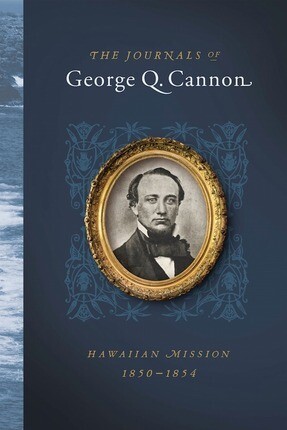Chances are you have heard someone utter the phrase: “the Church is the same everywhere.” I have traveled quite a bit and attended The Church of Jesus Christ of Latter-day Saints all over the world. In my experience, this statement is absolutely true. Also, completely false.
While the doctrine is the same, the lessons are taught from the same manuals, and the structure and organization is consistent, a strong local culture can’t help but influence (and in my opinion enhance) the worship experience. I can’t think of a better example of this than my home state of Hawaii. The Church is different there (also the same—am I confusing anyone yet?). In the spirit of celebrating the beautiful and unique place I was born, I give to you five ways the Church is different in Hawaii.
1. We don’t shake hands.
Okay, some people shake hands. There is not a weird “no one is to shake hands” rule. But in general, Hawaiians follow the Tommy Boy philosophy to life: “Brothers don’t shake hands, brothers hug.” I don’t currently live in Hawaii (sadly), so I love going back for visits and being reminded of the hugging culture. When I have brought friends to Hawaii and take them to Church with me, they always comment on how many strangers hugged them.
► You'll also like: 5 Tasty Luau Recipes Straight from the Polynesian Cultural Center
2. We wear leis.
Again, this is not a hard rule, but leis are much more than just something tourists wear to a luau or get at the airport. There are as many kinds of leis as there are flowers, and people wear them for every reason you can imagine. You would be hard-pressed to attend church meetings in Hawaii without seeing someone wearing a lei. Some people even wear them with the intention of finding someone to give it away to. (With a hug, of course.)
3. We repeat the speaker’s greeting. Out loud.
Probably the most distinguishing characteristic of Church attendance in Hawaii is when the sacrament speaker begins their talk with “Aloha, brothers and sisters” and then the congregation says it back. I love this tradition. It is a small but powerful way for those listening to show the speaker their support and offer their attention. There is part of me that wishes this was a tradition everywhere in the world.
A little tip: Saying “Aloha” is not the magic word (although it is a good one). Any greeting will work—just make sure you pause to allow the congregation time to repeat it.
4. We added a song to the hymnal.
We don’t claim it as a hymn or anything, but photo-copied and pasted in the back of normal LDS hymnals, “Aloha Oe (Farewell to Thee)” is the official song sung when people who have attended for a significant time leave a ward or the islands. After the closing prayer in sacrament meeting, when there is someone to say goodbye to, the congregation will stand and wait for the person or family to join those already on the stand. It is then that the beautiful words of this song are sung. When the chorus is repeated, those who wish to give a more personal goodbye (hug and leis often included) make their way to the stand. I can’t write about this experience without getting emotional. Needless to say, the love felt in the chapel is palpable, and it carries with you wherever you go.
► You'll also like: The Miraculous Story Behind the Laie Hawaii Temple
5. We have aloha.
There is nothing more uniquely Hawaiian than the word “aloha.” It is used in greetings and goodbyes, but its real meaning is so layered and complicated that I can’t do it justice here. In simple terms, aloha is a word that simultaneously expresses love, kindness, and respect. The spirit of aloha is cultivated in every ward and congregation across the islands and is the driving force behind items 1–4 above.
► You'll also like: "They Called It Hell, We Called It Heaven": The Story of Exiled Mormons in Kalaupapa Leprosy Settlement
Now, please don’t get me wrong. I have felt love, charity, and true brother and sisterhood outside of Hawaii—Hawaiians do not have a monopoly on this. But there is no doubt that there is something special and unique about these beautiful islands in the middle of the Pacific Ocean.
Learn more about the Church in Hawaii by reading The Journals of George Q. Cannon:
George Q. Cannon was a key figure in one of the great Latter-day Saint missionary stories of the nineteenth century. Beginning in 1850, he went with a few others to preach the gospel in Hawaii.
Although the first missionaries' path frequently seemed dark, the Lord lighted the way, and these missionaries to Hawaii found a people prepared to receive their message. By the time Cannon left the islands for his home in Utah, after having served nearly four years, thousands had joined The Church of Jesus Christ of Latter-day Saints.
The publication of George Q. Cannon's Hawaiian mission journal not only provides new insights into the history of that mission but also reveals the inspiring, faith-affirming, and life-altering experiences Cannon had as a missionary.


